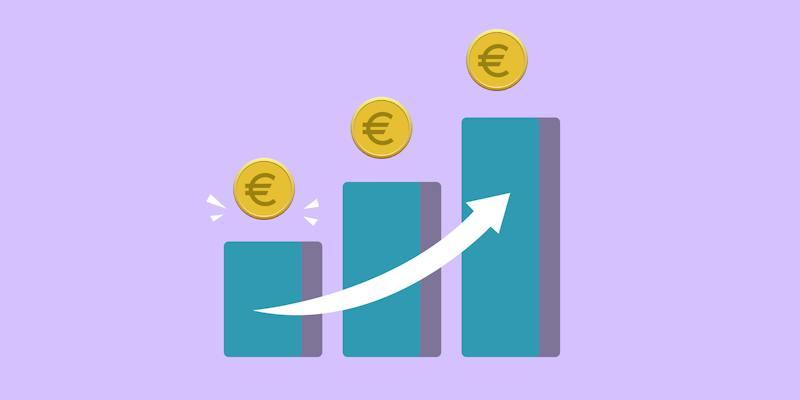A Beginner's Guide to Corporate Bonds: Definitions and Purchase Tips
Feb 01, 2024 By Susan Kelly
One could conceptualize purchasing a corporate bond ETF as extending a loan to the issuing company. If you fulfill the bond's due date, the company assures you of periodic interest payments. The company repays the principal amount lent at the bond's maturity. In contrast to the issuance of stocks, this approach is frequently liked by businesses seeking to raise capital without dilution of ownership.
When juxtaposed with the volatile nature of the stock market, high-quality corporate bonds are commonly perceived as a more reliable investment option. In contrast to more secure investments such as government or local bonds, they entail greater risk. Americans held $9.4 trillion in corporate bond funds in 2019. Despite their large market, the safety of these bonds depends on the issuing company's creditworthiness. Large, stable corporations issue safer bonds than smaller, less stable companies.
Working Of Corporate Bonds

Corporate bonds are different from stock. Bonds, unlike shares, are loans to a company. Standard bond sales are $1,000. The corporate bond etf terms require regular interest payments until maturity. More clarification on bonds vs. CDs would be helpful. In contrast to stocks, most corporate bond funds are traded on the secondary market or OTC. Brokers or dealers help buy and sell bonds. Bond prices can fluctuate between a premium and a discount to their par value.
Market interest rates often hurt bond prices. Bond prices fall when interest rates rise and rise when they fall. This is crucial to bond valuation. Bond YTM matters here. Staying with the bond until maturity will yield an annual return. Along with principal and interest, it considers the bond's purchase date. It is difficult to calculate YTM to determine how a bond's purchase price affects its value.
Let's look at three hypothetical bonds to illustrate this:
- Bond X is priced at its par value of $1,000. If you buy corporate bond etf X, you will get $30 every year in interest until the bond matures in 5 years, and you then get your $1,000 cash back.
- A $70 discount from its face value, Bond Y is listed for $930. This observation may indicate that the prevailing market interest rates surpass the 3% interest rate proposed for Bond Y. Despite sustaining an interest rate of $30, corporate bond etf Y exhibits a yield to maturity of 4.58% due to its reduced purchase price. Because the entire $1,000 is refunded at maturity, it remains an appealing alternative, notwithstanding the reduced coupon rate.
- The case with Bond Z is unique. It is priced at $1,080—$80 more than its nominal value. Since the issuance of Bond Z, this premium frequently signifies a decline in market interest rates. Investors might be willing to pay a premium for Bond Z if its 3% interest rate exceeds the current rate. Despite receiving the same $30 annual interest, the discounted yield to maturity of 1.34% is due to the higher initial investment in the bond.
Types Of Corporate Bonds
Interest on Bonds
Interest-bearing repayment obligations are assumed by investors when corporations issue high yield corporate bonds. The coupon rate is how they pay interest. Fixed-rate bonds pay the same yearly interest till maturity. Usually, these payments are made every six months.
A floating-rate bond adjusts its interest payments to market rate changes. Pegged bonds react to benchmarks. Setting the interest rate of 1% over a benchmark is an example. How do zero-coupon bonds work? Periodically, they skip interest. Conversely, their market worth drops. The investor will benefit when the bond matures, and they are paid in full. One example is reinvesting $1,000 five years after buying a zero-coupon bond for $4,000.
Creditworthiness
Credit rating firms assess corporations before bond issues. S&P, Fitch, and Moody's are the most respected worldwide rating agencies. Company finances determine bond repayment risk. This approach gives a rating that indicates the company's financial soundness and credit risk.
Investment grade and non-investment grade are typical grades. Investment-grade bonds are safer since they are more likely to be repaid. Non-investment-grade "junk" bonds have more risk but higher yields. A bond's highest credit grade, "triple-A," indicates financial stability and low risk. Lower ratings imply more risk due to bond quality and the organization's financial situation.
Bond Maturity Periods
Corporate bonds are loans to companies, thus timeframes vary. This is generally classified into three-lifetime groups. Short-term bonds mature 1–3 years. Medium-term initiatives last 4-10 years. Long-term bonds are over 10 years old. Longer-term bondholders get greater rates. This premium's reward is a long-term fund guarantee. Despite their relevance, these investments are dangerous. These bonds' long-term worth may depend on interest rates.
In 2020, the U.S. Treasury discovered that interest charge changes made long-term bonds more unstable than short- and medium-term bonds. Market sensitivity makes long-term bond investment volatile. However, higher profits still attract investors. In 2021, 60% of long-term corporate bonds were issued on European markets, indicating investor interest in their potential rewards. However, this desire for longer maturities acknowledges the bond's tenure's greater risk and value volatility.
Stock Versus Bond Investments

In contrast to stock ownership, corporate bond funds indicate a loan to a company. Company value, which affects performance, affects stock prices. Selling stock for more than you paid can make you money. A company's dividends are another option. However, investing in bonds is about steady income from interest payments. Initial investments are usually safe unless the company fails. Before addressing stockholder claims, a bankrupt company must pay its bondholders. Still, there are nuances.
Corporations issue convertible bonds, a bond-equity hybrid. In addition to a fixed income, investors in these bonds can convert them into company shares under certain conditions. Regarding the fiscal environment, both stocks and bonds are vital components. For example, the global bond market was estimated to be worth $128.3 trillion in 2021, whereas the worldwide stock market was valued at approximately $95 trillion. This demonstrates the immense scale and significance of these investment avenues. The presented data underscores the varied approaches and inclinations of investors across the globe as each selects the course of action that most closely corresponds to their financial objectives and risk appetite.

Susan Kelly Nov 18, 2023
Liberty Mutual Auto Insurance Review 2023: Everything You Need To Know
25108

Susan Kelly Dec 25, 2023
Adjudication – The Important Step of Legal Ruling
16322

Susan Kelly Jan 03, 2024
What is FHA Streamline Program?
76320

Triston Martin May 10, 2024
Market Capitalization: Definition, Example, And Categories
86080

Susan Kelly Oct 05, 2023
Major Characteristics of Esurance Insurance
82829

Susan Kelly Dec 24, 2023
The ATM Just Ate Your Deposit. Now What?
46297

Triston Martin Feb 06, 2024
Choosing Between Personal and 401(k) Loans: Insights for Financial Planning
49140

Triston Martin Jan 06, 2024
Do You Know: How To Cancel a Pending Transaction
94681